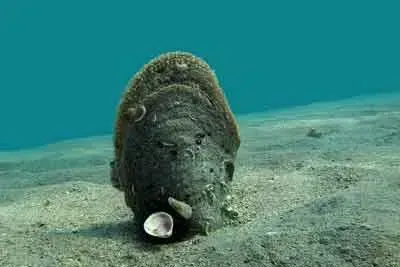Our place in nature - the Ambracian Gulf and its wildlife
Here in Rouga Bay we are in a special place. As a breeding ground for several rare and endangered species, the Ambracian Gulf (also known as Amvrakikos) is one of Greece’s most important and complex wetlands, made up of the double deltas from the Louros and Arachthos rivers, mudflats, shallow bays, reedbeds and wet meadows. Spreading over 400km, the average depth of the gulf is 30m (but reaches 60m), its bottom consisting mostly of mud and sand. In 2008, the gulf was declared a
national park
but has been unmanaged. We are working with environmental groups to track vulnerable species; data gathered helps build a case for protection.
The gulf is a key habitat for a huge diversity of wildlife, its marshes and lagoons making the area of particular importance for bird diversity - it is a breeding site for Dalmation pelicans, and over 300 bird species have been recorded, 160 migratory, 6 of which are globally threatened. Anyone who visits Rouga in the winter will be familiar with the grunting from our neighbours, the migratory flamingos. Also in the sky we regularly spot kingfishers, herons, storks, buzzards and eagles. In winter we witness the incredible spectacle of ‘superflocks’ of migrating cormorants, swooping across the bay in their hundreds.
On land, there are foxes and martens, wild pigs and boars while nearby, there has been a reintroduction of water buffalos. In the not-too-distant past, musk rats were spotted. The Iberian emerald lizard resides here - another threatened species, while we seem to have an abundance of Mediterranean house geckos (not least in the shower area!). Do look out for our giant toad who likes to hang out by the bathrooms at night. And the occasional tortoise.
At sea, there is one of the largest recorded resident populations of
bottlenose dolphins
in the Mediterranean (recent estimates of around 160 individuals). Efforts are underway with local fishermen to tag several different species of
rays and (harmless)
sharks. The gulf is also an important foraging ground for loggerhead sea turtles. At Rouga, we’ve observed some very vulnerable species, regularly spotting
short snouted seahorses,
so do look out for them when entering shallow water with shoes and fins. The presence of the seahorses may well be thanks to the patches of seagrass (most probably
eel grass) we have, offering filtration, carbon storage, and safe breeding grounds for juvenile fish. We are also one of the very few remaining sites in Europe where
fan mussels survive. This bivalve - lookinglike a giant clam - is unique to the Mediterranean, helps to filtrate the water, and since 2016 has all but been wiped out in a mass mortality event (due to a parasite that decimated 99.9% of the population, and predation from invasive species such as blue crabs). It is now on the
(IUCN) red list as critically endangered. We have seen a huge reduction in numbers of these mussels here in the last decade too, but are aware of some surviving specimens. We will be charting these soon, in an effort to protect them. We would welcome your help - if you spot one while snorkelling, note its location so we can all avoid anchoring in the seabed around them.
Thanks for reading and ENJOY YOUR TIME in our quiet paradise
Rouga Bay Boatyard





